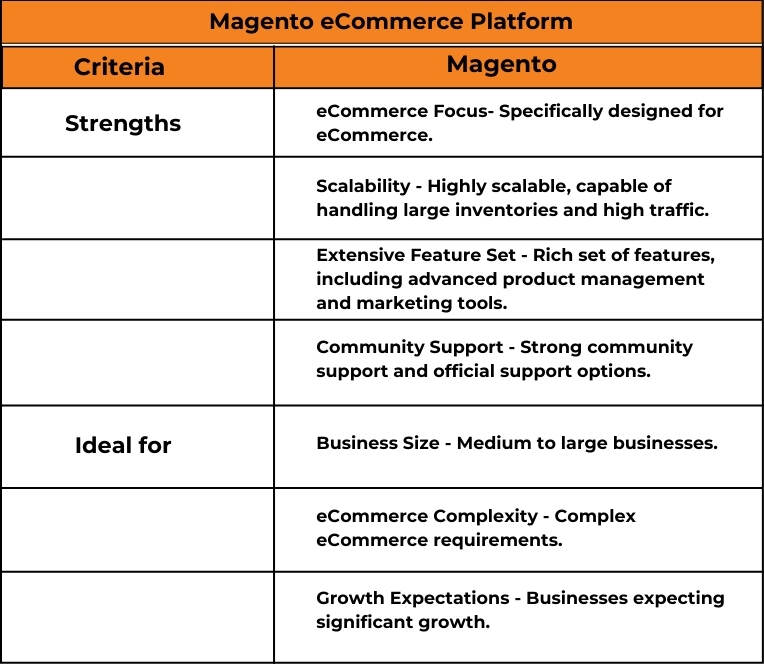In an era of online shopping, having a highly responsive eCommerce website has become a basic criterion for business success.
However, as consumers become more discerning and competition intensifies, prioritising user experience is not just good practice; it’s a strategic imperative for developing a functional eCommerce website.
A report suggests that 88% of the users leave the site immediately if they do not find it user-friendly. In comparison, 75% of consumers judge the site’s credibility based on its overall aesthetics. And surprisingly, this is all done within a short period of just 3.42 seconds. It means you have a tiny space to mark your presence in the eCommerce industry.
However, if you wisely use the key elements of eCommerce website development and apply the UX and UI components, you can definitely compete with your close counterparts and capture a commendable market share.
Therefore, in this article, we will take you through the informative journey of eCommerce website development and introduce you to the essential elements that you can use to create your stunning eCommerce website.
Not just this! You will also get some professional tips for designing an attractive eCommerce website, which will help elevate your online store’s performance.
So, stay tuned while we begin with this informative journey!
What is eCommerce Website Development?
The eCommerce web development refers to creating online platforms that facilitate buying and selling goods and services over the Internet. These websites enable businesses to showcase their products or services, manage transactions, and provide customers with a seamless and secure shopping experience.
Fact Check!
|
Therefore, setting up your eCommerce store is necessary whether you are in a B2C or B2B business. It is a bridge that connects buyers and sellers to the same online platform.
[Also read: Setup Your Online B2B eCommerce Store]
Why Do You Need a Responsive eCommerce Website?
A responsive eCommerce website is essential for the success and growth of today’s retail businesses. It ensures attracting users through various devices, helps reach a diverse audience, improves SEO, and provides a positive user experience (UX).
Let look at some of the reasons to have a responsive and functional eCommerce website for your business:
- Enhanced User Experience – Responsive design provides a seamless and consistent user experience across different devices. Visitors can easily navigate through your site, view products, and make purchases without encountering issues related to layout or functionality.
- Higher Conversion Rates – A positive user experience translates into higher conversion rates, as visitors are more likely to make purchases when the process is smooth and convenient.
- Competitive Advantage – A responsive eCommerce site lets you stay competitive in the online market and demonstrates your commitment to providing a modern and user-friendly experience.
Do you Know! 80.69% of the world’s population uses smartphones, which means a significant portion of internet traffic comes from mobile devices. With the increasing use of smartphones and tablets, having a responsive design ensures that your eCommerce website looks and functions well on all screen sizes.
[Also read: Turn Your Website into Mobile App: A Comprehensive Guide]
Now that you know a responsive eCommerce website is pivotal for your business growth, let us figure out the significant elements of eCommerce development.
Key Elements of eCommerce Website Development
Developing a successful eCommerce website requires careful planning and attention to critical elements. Whether launching a new eCommerce website or revamping an existing one, incorporating these essential elements will contribute to a user-friendly, secure, and high-performing online shopping experience.
We have compiled here the 7 most critical elements of eCommerce web development. These are as follows:
Element 1: User-Friendly Design
An intuitive and well-designed user interface is the foundation of a successful eCommerce website. The design should be visually appealing, easy to navigate, and optimised for smartphones and desktops. Prioritise a clean layout, precise product categorisation, and an easily accessible search function to enhance user experience.
User-friendly design is crucial to the success of an eCommerce website, offering a range of benefits that contribute to customer satisfaction, engagement, and overall business success.
Key Benefits:
- Enhanced User Experience – Easy navigation lets users find products quickly, creating a more pleasant and efficient shopping experience and a positive first impression, enticing visitors to explore the website further.
- Increased Customer Satisfaction – A streamlined and user-friendly checkout process reduces friction, minimising the likelihood of cart abandonment and enhancing overall customer satisfaction.
- Brand Loyalty and Trust – A cohesive and user-friendly design reinforces brand identity, fostering customer trust and recognition and encouraging them to return, building long-term relationships and brand loyalty.
Element 2: Mobile Responsiveness
Most online traffic and organic users come from mobile and other smart devices. Therefore, ensuring that your eCommerce website is responsive is crucial. A mobile-friendly design allows users to seamlessly browse and make purchases on smartphones and tablets, contributing to increased conversions and customer satisfaction.
[Also read: How to build a Mobile App for your eCommerce Store?]
By witnessing the significant shift of users towards mobile shopping, we can say that mobile responsiveness is crucial for eCommerce websites.
Key Benefits:
- Increased Mobile Traffic – As more users shop and browse on their mobile devices, a mobile-responsive eCommerce website captures a larger audience and benefits from the increasing trend of mobile traffic.
- Higher Conversion Rates – A mobile-responsive design contributes to higher conversion rates by facilitating a smooth and efficient shopping experience.
- Improved SEO Performance – Mobile responsiveness is a significant factor in search engine algorithms because they prioritise mobile-friendly websites in mobile search results, improving visibility and potentially higher organic traffic.
Element 3: Robust Product Pages
Engage your customers with compelling product pages. Incorporate high-quality images, detailed product descriptions, pricing information, and user reviews. Implement a user-friendly shopping cart system, allowing customers to easily add and manage items before checking out.
Each product page should provide comprehensive information. An effective product page encourages visitors to make informed purchasing decisions.
Key Benefits:
- Reduced Customer Uncertainty – Including customer reviews and ratings on product pages builds trust and helps potential buyers gain insights into the real-world experiences of others, reducing uncertainty and hesitation.
- Personalisation Opportunities – Utilising recommendation algorithms on product pages allows you to suggest related or complementary items based on user preferences and browsing history, encouraging upsells and cross-sells.
- SEO Benefits – Well-crafted product descriptions incorporating relevant keywords contribute to SEO optimisation, enhancing the visibility of your products in search engine results (SERPs) and attracting organic traffic.
Element 4: Smooth Checkout Process
Streamline the checkout process to minimise friction and reduce cart abandonment. Implement a user-friendly shopping cart, provide multiple payment options, allow guest checkout options, and ensure a secure and efficient checkout experience. Provide real-time order tracking and confirmation emails to inform customers about their purchases.
A smooth checkout process offers a variety of benefits that directly impact customer satisfaction, conversion rates, and overall business success.
Key Benefits:
- Reduced Cart Abandonment Rates – A smooth flow from product selection to payment completion encourages users to finalise their transactions, reducing the likelihood of cart abandonment.
- Guest Checkout Option – Including a guest checkout option allows users to make online purchases without creating an account. It caters to those who prefer a quicker process and helps to capture first-time or one-time customers.
- Progress Indicators – Incorporating progress indicators provides users with a clear understanding of where they are in the checkout process, helping them manage their expectations, reducing anxiety, and proceeding to the next step.
Element 5: Secure Payment Gateway
Security is paramount in eCommerce. Thus, integrating a secure and reliable payment gateway that encrypts sensitive information during transactions is imperative. Implement SSL certificates and comply with industry standards to build trust and protect sensitive information.
Build trust with your customers by prioritising the protection of their financial data.
Key Benefits:
- Customer Trust and Confidence – A secure payment gateway instils confidence in customers that their financial information is protected. This encourages them to make purchases without concerns about the safety of their sensitive data.
- Protection Against Frauds – Secure payment gateways incorporate advanced security features like encryption and fraud detection tools to protect against unauthorised transactions and fraudulent activities.
- Data Encryption – Payment gateways use encryption protocols (SSL/TLS) to secure sensitive information between the customer’s browser and the server. This ensures that payment details are transmitted securely and cannot be easily intercepted by malicious actors.
Element 6: Search Engine Optimisation (SEO)
Optimise your eCommerce site for search engines to enhance visibility and attract organic traffic. Utilise relevant keywords, create descriptive product meta-tags, and generate SEO-friendly URLs to improve search engine rankings and algorithms.
A well-optimised site attracts organic traffic and enhances discoverability. It offers a list of benefits contributing to improved visibility, traffic, and overall success in the competitive online landscape.
Key Benefits:
- Increased Visibility – Effective SEO strategies improve your eCommerce website visibility in SERPs, leading to increased organic traffic, as users mostly click on results appearing on the first page.
- Better User Experience – SEO involves optimising your website’s structure and content by improving page load times and creating user-friendly navigation. This optimisation enhances the overall user experience.
- Targeted Keyword Optimisation – You can attract highly targeted traffic by researching and strategically incorporating relevant keywords into product descriptions, meta tags, and URLs.
Also Read: Ecommerce SEO Guide
Element 7: Social Media Integration
Social media integration into your eCommerce website allows you to tap into the extensive networks, expanding your brand reach to potential customers who may have yet to discover your website through traditional channels. It also serves as a powerful source of referral traffic and allows you to display social proof elements on your product pages, such as the number of likes, shares, and comments.
Leverage the power of social media by integrating sharing options and promoting your products across various platforms. Social media integration enhances brand visibility and encourages user engagement.
Key Benefits:
- Increased Brand Visibility – By leveraging social platforms, you tap into a larger audience, increasing the visibility of your products and services.
- Direct Customer Engagement – Social Media Integration allows users to comment, ask questions, and provide feedback, fostering a sense of community. It also allows you to address customer inquiries promptly.
- Traffic Generation – Integrating social sharing buttons and features on product pages encourages users to share your products with their social networks. This brings in additional traffic and serves as a form of word-of-mouth marketing.
How to Make a Functional eCommerce Website?
Creating a functional eCommerce website doesn’t have to be overly complex and requires careful consideration of essential elements.

[Also read: 8 Trends Advancing the eCommerce Industry]
Therefore, let us now walk through the 5 step process of creating your stunning eCommerce store using the key elements of eCommerce development.
Step 1: Define Your Goals and Product
Clearly outline the goals of your eCommerce website. Identify the products or services you want to sell and understand your target audience. Define the unique selling propositions that will set your online store apart.
Step 2: Choose an eCommerce Platform
Make a careful selection of an eCommerce platform that aligns with your business needs and combines with technical expertise. Some user-friendly options for beginners include:
- Magento – Magento is an all-in-one solution with easy setup and a range of templates.
- Joomla: Joomla is a plugin-loaded platform that turns your site into a fully functional and intuitive eCommerce store.
[Also read: 10 Live Examples of Websites Using Joomla] - Drupal: A highly secured, robust and persuasive platform, Drupal is known for its simplicity and scalability.
[Also read: Is Drupal Good for eCommerce?]
Step 3: Design Your Website
Opt for a clean layout and intuitive design that aligns with your brand. Ensure that the design is less complex and responsive, providing a seamless experience across devices.
Step 4: Set Up Product Pages and Payment Processing
Add your products to the eCommerce platform, including clear product descriptions, prices, and high-quality images. Set up a secure payment gateway to process credit or debit transactions.
Step 5: Test and Launch
Thoroughly test your eCommerce website before launching. Check for functionality, test the checkout process, and ensure all links and buttons work as intended. Once you’re satisfied with the testing, launch your eCommerce website.
Following these five steps, you can quickly establish a functional eCommerce website.
However, if you are still bewildered about selecting the most suitable eCommerce platform for opening your online store, we will help you with your selection.
Which Platform to Select for Building your eCommerce Store?
The major eCommerce platform market share is in the hands of WooCommerce because it offers thousands of plugins and themes, an easy WooCommerce website update facility, and active community, etc. However, if you don’t want to go with WooCommerce, we have three other trusted options for you: Joomla, Magento and Drupal.
The choice between Magento, Joomla, and Drupal for building your eCommerce store depends on your specific requirements, technical expertise, and business goals. Each platform has its strengths and weaknesses. Hence, let us take a closer look at these platforms below:

[Also read: Magento Features to Help You Build Your eCommerce Store]

[Also read: Cost of Building a Joomla Website]

[Also read: Why Drupal is the Best CMS for Your Business?]
| Which Platform to Select for Building Your eCommerce Store?
The best platform selection depends entirely on your specific needs and resources. However, consider some essential points before making your choice. Take a look at the table below.
|
Professional Tips for improving your eCommerce Site Performance
Improving the performance of your eCommerce site is crucial for its online presence. Therefore, here we have compiled expert tips from the most seasoned eCommerce website developers to enhance the overall aesthetics of your online store.
Let’s check these professional tips below:
- Optimise Images – Compress and optimise images without compromising quality. Use image formats like WebP and lazy loading techniques to reduce load times.
- Minimise HTTP Request – Reduce the number of elements on a page, including images, scripts, and stylesheets. Each element requires a separate HTTP request, and minimising these requests can significantly improve loading times.
- Enable Browser Caching – Leverage browser caching to store static files on visitors’ devices. This reduces the need to reload these files on subsequent visits, leading to faster load times.
- Reduce Server Response Time – Optimise your server configuration and consider upgrading your hosting plan. Aim for a server response time of under 200 milliseconds.
- Implement Lazy Loading – Use lazy loading for images and other non-essential elements. This helps reduce the initial page load times by deferring the loading of images until they are about to come into the user’s viewport.
Cost of Building an eCommerce Store
The cost of building a stunning eCommerce store in Australia can vary from agency to agency, depending on several factors. The potential cost depends upon the components like the choice of eCommerce platform, professional design and branding services, website complexity, and inclusion of added features and functionalities.
The average cost of a standard eCommerce website ranges between $ 30,000 to $50,000. However, for a custom eCommerce website development consisting of factors like website design, plugins, SEO consideration, etc., your eCommerce website development company may quote you upto $200,000.
Conclusion
A well-planned and strategic eCommerce website development is an essential building block for online businesses’ success. It involves a holistic approach that considers both the technical and user-centric aspects.
By prioritising the mentioned vital elements and other necessary detailing, companies can create a robust and customer-friendly online shopping experience, ultimately driving success and growth in the dynamic eCommerce landscape.
However, investing in a professional is crucial for observing visible changes and performance elevation of your online store. Thus, connect with a highly experienced eCommerce development company and create your dazzling online presence.
FAQs
Q1: How long does it take to develop an eCommerce website?
Ans: The timeline varies based on the complexity of your project. A simple site may take a few weeks, while a more intricate one with custom features could take several months. Proper planning and communication with your development team are crucial.
Q2: What security measures should I implement for my eCommerce site?
Ans: Implement secure payment gateways, use HTTPS, regularly update software, and conduct security audits. Protect customer data, employ strong password policies, and adhere to PCI DSS compliance standards.
Q3: How to choose the best eCommerce website development company?
Ans: Choosing the best eCommerce website development company requires careful consideration of several factors, including their portfolio and experience, technical expertise, client testimonials and reviews and process and cost transparency.














